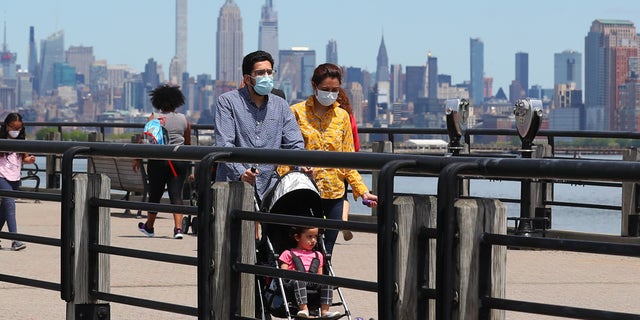(Fox News) – Public health officials have advised wearing a mask in public and remaining at least six feet from anyone else to prevent the new coronavirus from spreading. These measures are credited with flattening the curve in places like New York City.
However, that distance may not be far enough, depending on the weather conditions.
In a paper published on Tuesday in Physics of Fluids, Talib Dbouk and Dimitris Drikakis discovered that with even a slight breeze of 2.4 miles per hour, saliva can travel up to 18 feet in only 5 seconds.
“Overall, the results show that in open spaces, airborne droplet carriers can travel significantly further than the 2 meters (6 feet) recommended distance due to the wind speed,” the authors write in the study.

Many different factors influence how saliva droplets move through the air, including their size, how they interact with the surrounding air and the humidity and temperature of the surrounding air.
Dbouk and Drikakis produced a computational fluid dynamics model that examines the state of every saliva droplet moving through the air in front of a coughing person. Their simulation considered factors like “relative humidity, turbulent dispersion forces, droplet phase-change, evaporation, and breakup in addition to the droplet–droplet and droplet–air interactions,” according to the paper’s abstract.
The researchers’ analysis involved running so-called partial differential equations on 1,008 saliva droplets and solving approximately 3.7 million equations in total.
“The purpose of the mathematical modeling and simulation is to take into account all the real coupling or interaction mechanisms that may take place between the main bulk fluid flow and the saliva droplets, and between the saliva droplets themselves,” Dbouk explained in a statement to the American Institure of Physics.
Wind shown blowing left to right at speeds of 4 kph (top) and 15 kph (bottom) can transport saliva droplets up to 19 feet.
“This study shows that, when a person coughs, the wind speed in an open space environment significantly influences the distance that airborne disease-carrier droplets travel,” the authors write in the study’s conclusion.
More work is needed to examine how ground surface temperatures impact the behavior of saliva in the air and to also investigate indoor environments.
As of Tuesday afternoon, globally at least 4.8 million people were infected with coronavirus and at least 321,459 people have died.

